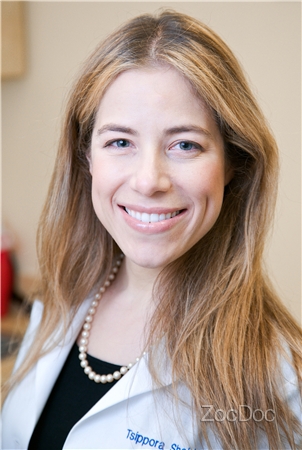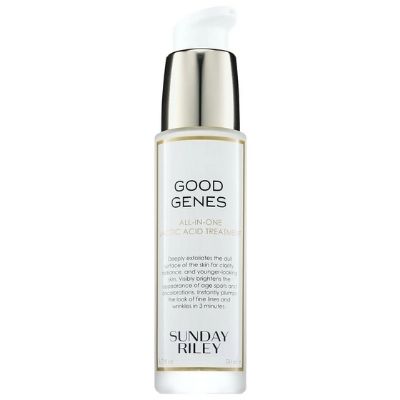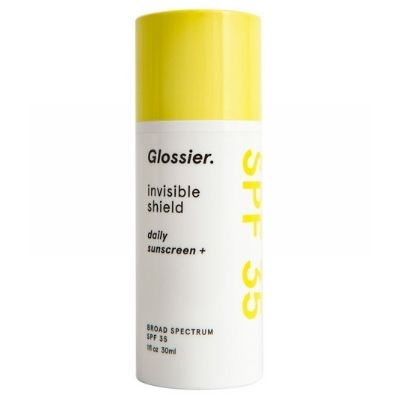As you begin to focus on youth preservation as it relates to skincare, a topical treatment more effective than retinol at maintaining elasticity and warding off fine lines doesn’t exist. While retinol is an absolute necessity for retaining your youthful glow, navigating the different formulations and deciding which is best for your routine can be tricky.
We’re breaking down the different terminology of retinol and giving you some important tips you should know before you begin using it. Relax, your best skin is on the way!


What is retinol?
Retinol, to put it simply, is a form of vitamin A. “Retinoids encourage skin cell maturation and boost cell turnover, removing superficial dead skin and flattening the top layers of cells, leaving skin looking smoother, luminous, and more even-toned,” said Dr. Tsippora Shainhouse, MD, FAAD, board-certified dermatologist in Beverly Hills, California.
Retinol is the gold standard for youth preservation (anti-aging) in skincare because it is the only scientifically proven ingredient that effectively stimulates the production of collagen while also being extremely effective against acne. “[Retinols] help loosen the dead skin cells that clog up pores and lead to acne lesions, especially when combined with oil and bacteria,” Dr. Shainhouse said. “They can help treat and prevent both comedones (blackheads and whiteheads) and inflammatory acne lesions.”
She explained that retinol is also often combined with other ingredients to help tone, soften, and soothe acne-prone skin. So whatever your skin issues are, slowly adding a retinol product to your routine can’t hurt.

Source: Social Squares
There are various types of retinol, and navigating the verbiage is what makes this must-have product sometimes very intimidating to understand. Retinol, retinoids, and Retin-A—what’s the difference? The difference comes down to retinoic acid.
Retinol and retinoids are essentially the same thing; when applied topically, they react with the enzymes in your skin to produce retinoic acid. Your skin uses this retinoic acid to improve discoloration, reverse the visibility of fine lines, stimulate collagen production, and strengthen deeper levels of your skin to prevent it from showing signs of aging. This process is a lengthy one—the creation and retention of higher levels of retinoic acid can take three to six months to see full results.
Retin-A is one of many brand names for prescription-strength tretinoin. Tretinoin, another derivative of vitamin A, is itself a retinoic acid and does not require any metabolic function in order to create retinol in your skin. This is why tretinoin can only be obtained with a prescription, as it has been said to be roughly 100 times stronger than over-the-counter retinol products.

Source: Homey Oh My
Retinoids v. Retin-A—Which one do I need?
Deciding which retinol product to use can be really difficult. A dermatologist will tell you that prescription strength is the only real way to see results, and an esthetician will balk at the idea of such a heavy-handed approach. So, what should you do? Dr. Shainhouse said that pretty much anyone can use and benefit from a retinoid product in their skincare routine, but they “must find the formulation best suited for [their] skin type and skin condition.”
If you’ve never used a vitamin A product before, testing the waters with a retinoid is probably the best way to start. However, keep in mind that in order to see any results from the use of a retinoid, you will have to use it every night (or every other night if your skin is especially sensitive) for up to six months. This is important when considering the price point of the products you choose, as you will likely go through a few bottles in that time.
$5.30
An extra budget-friendly option with tons of positive reviews.
$21.99
Perfect for beginners who want a gentle product that is still effective.
$69
Moisturizing and gentle for sensitive skin.
$88
From celebrity esthetician Shani Darden's expert line of products comes this serum containing a mix of retinol and lactic acid to renew, resurface, and replenish skin.
If you’ve noticed a few fine lines or your skin is a little duller than it once was, then a retinoid will work just fine. Board-certified cosmetic and medical dermatologist Caroline A. Chang, MD, FAAD recommended talking to a doctor about tretinoin if you’re looking to treat acne or if you have very oily skin. In short, retinoids are great products—tretinoin is just stronger. Tretinoin should be used every three nights when you first begin, working up to every two, and then eventually every other night. Use your best judgment and keep in communication with your doctor. While we typically think of retinol as only a youth-preserving product, tretinoin is one of the strongest and most effective medicines for acneic skin.
“For cosmetic use, anyone over 30 should start using a retinol to maintain healthy skin,” Dr. Chang said. She suggested starting with over-the-counter retinol if you have dry or sensitive skin. After using the bottle without experiencing irritation, choose a higher-strength formula or talk to a doctor about prescription-strength retinol or tretinoin.” Stronger isn’t necessarily better [because] retinols all work for anti-aging, but stronger ones are usually more drying, [which is] good for those with oily skin,” Dr. Chang said.
Dr. Shainhouse noted that retinol use is not approved while you’re pregnant or breastfeeding.
Source: Rawpixel
What to expect when using retinol
Vitamin A is incredible for your skin, but unfortunately, you’re going to have to convince your skin that this is true at first. Retinoids and tretinoin are notoriously irritating at the beginning phases of use, which is why a lot of women ditch them before seeing any results. But why does that happen? “Skin cells are programmed to develop and make their way to the skin surface over two weeks, and then shed over two weeks,” Dr. Shainhouse said. “This process can slow down as skin ages and cells are often retained in the top layers, leaving skin dull, flaky, clogged. The application of topical retinoids ensures that skin cells mature and shed as they are supposed to.” This is why your skin sheds or peels.
Go into your new relationship with retinol by accepting the initial “ugly phase” that will come with it. Your skin might purge (bring underlying blemishes to the surface quicker), peel, and be in some state of inflammation for a little while. Stick it out. It will be worth it.
More is not more when it comes to retinol—you must use these products as they are directed to be used. You cannot use retinol as a spot treatment, and you will regret doubling up on the product with the hopes that it will work faster. It won’t.
If you have a darker skin tone, Dr. Shainhouse explained that the irritation from using retinol can result in temporary dark patches on your skin (also known as post-inflammatory pigmentation, or PIH). “Start [retinol products] low and slow in darker skin types.”

Source: @glow.with.mae
How to use retinol
Again, only use your retinol products as directed by either the packaging or your doctor. After you’ve double cleansed and patted in a gentle toner, allow your skin to fully dry for up to 30 minutes. Apply a pea-sized amount of your product in upward strokes, focusing on the forehead, around your mouth, under your eyes, and along your jawline.
Both Dr. Shainhouse and Dr. Chang explained that the best way to prevent peeling and irritation is to start slow. “You can also start using retinol a few times a week and gradually increase applications until your skin can tolerate nightly application,” Dr. Chang said.
Because retinol encourages new skin cell production, it also speeds up the dying of old skin cells. Incorporating acidic exfoliation once or twice a week will help minimize the peeling that retinol is known to cause when you first begin using it. Use these treatments on nights when you aren’t applying retinol or in the morning when you can allow a full 12 hours before your retinol goes on.
$27.95
A glycolic acid serum suspended in a cream that's perfect for dry, sensitive skin.
$58
This gentle-yet-effective AHA exfoliating night serum uses 14 percent AHA, along with hyaluronic acid and honey to moisturize and soothe irritated skin.
$122
This lactic acid treatment exfoliates, smoothes textures, and replenishes the skin—all in one product.
A calming and gentle moisturizer should go on after you’ve allowed your retinol product to fully absorb. Try to wait at least 20 minutes before applying any product on top to ensure that your skin is receiving a full concentration of the retinol.
$18.99
For extra dry skin that needs an occlusive barrier at night to lock in moisture, look no further than Skin Food.
$18.69
A hydrating gel moisturizer with hyaluronic acid, perfect for combination/oily skin types.
$36
This thick cream moisturizer can be used on the face or body for a non-greasy but highly moisturizing night cream.
However, retinol can make your skin sensitive to the sun because of its exfoliating properties. “Newer, fresher skin cells may be more prone to sunburn and new UV damage,” Dr. Shainhouse said. She suggested always using a broad-spectrum sunscreen, but it’s especially important to apply every morning while using any retinol products.
$25
"Sunscreen for people who dont like sunscreen" is right—the lightweight water-gel formula of this sunscreen is basically undetectable on the skin.
$30.50
Acne-prone, sensitive, dry, and oily skin types will benefit from this non-drying, non-irritating, dermatologist-favorite sunscreen.
$34
Half sunscreen, half makeup primer, this sunscreen dries down to a natural finish to diminish pores and grip makeup, all while protecting from UVA/UVB rays.


 "
"












